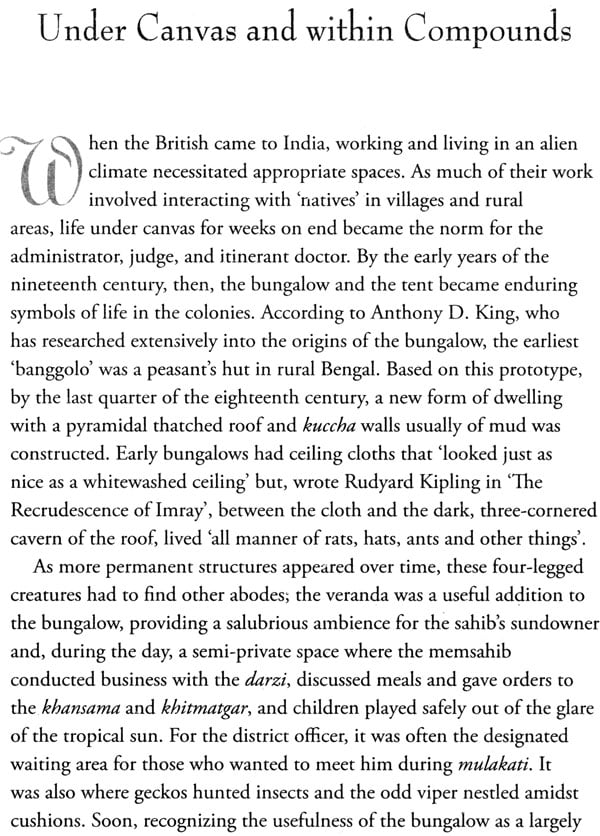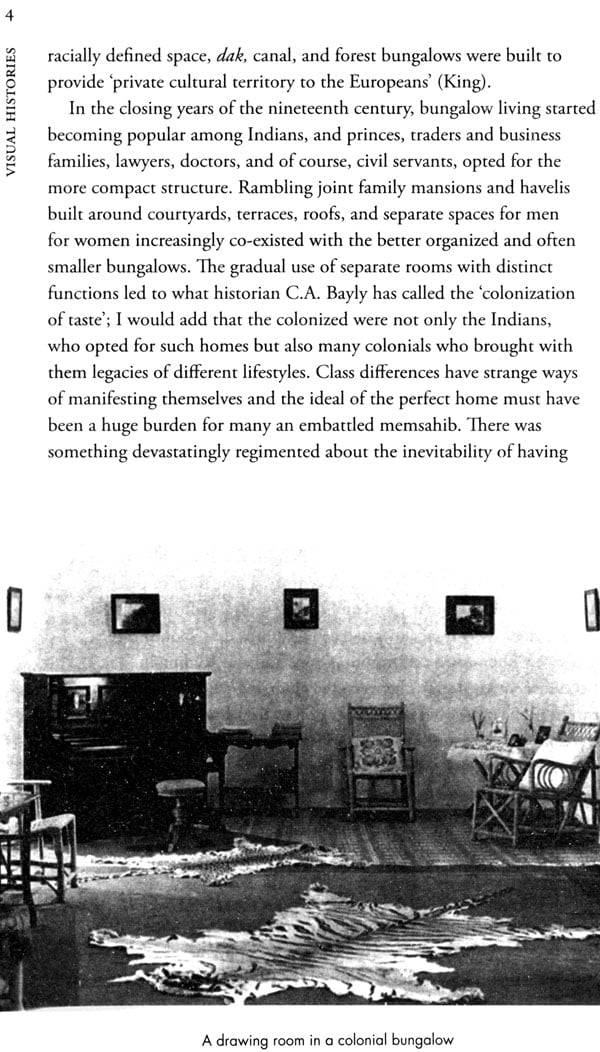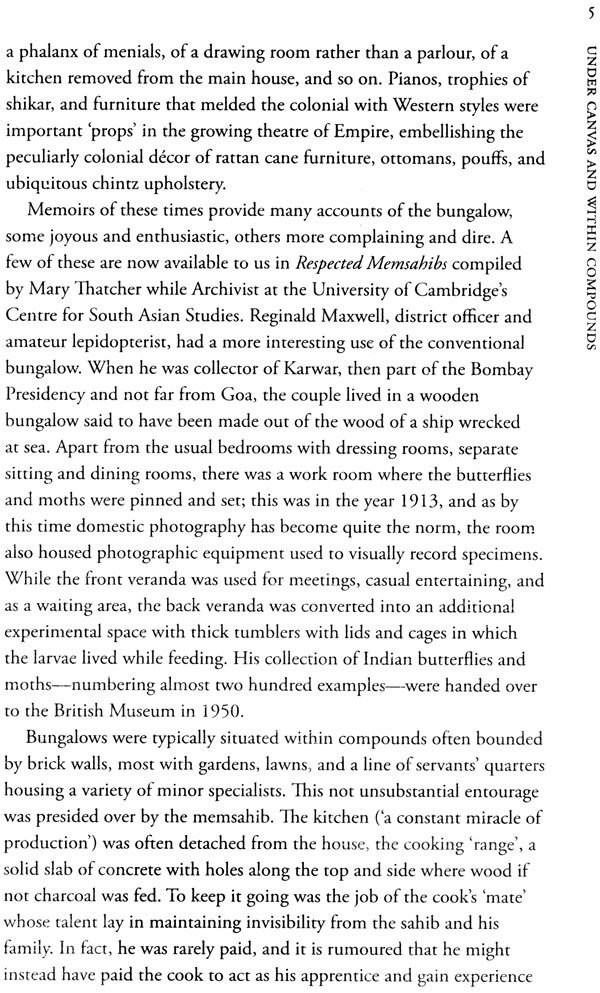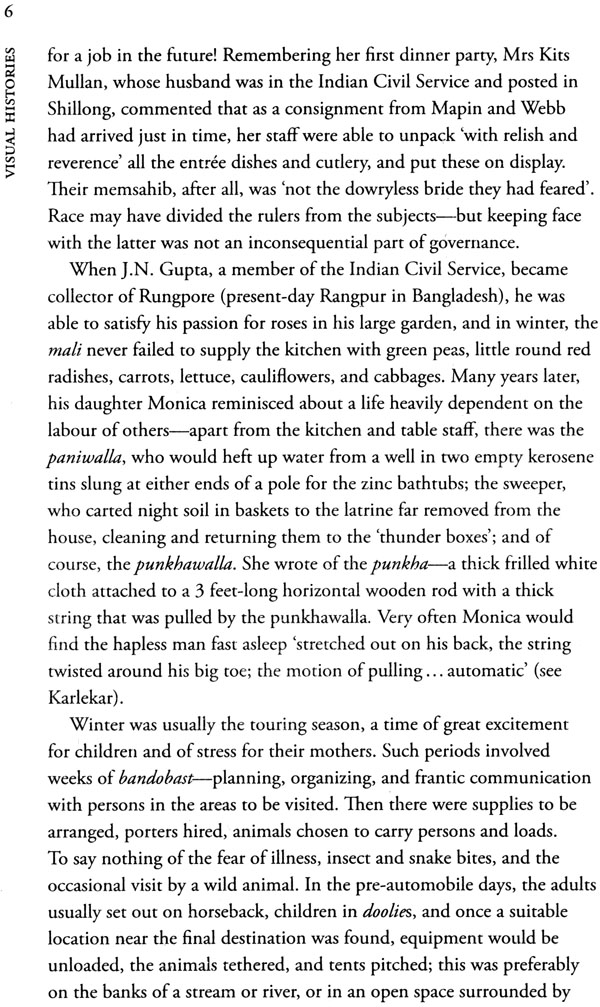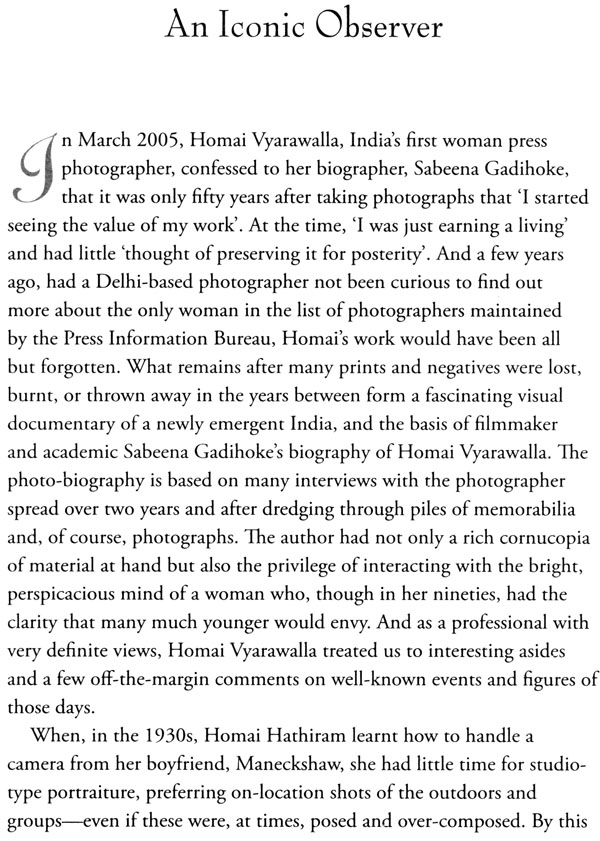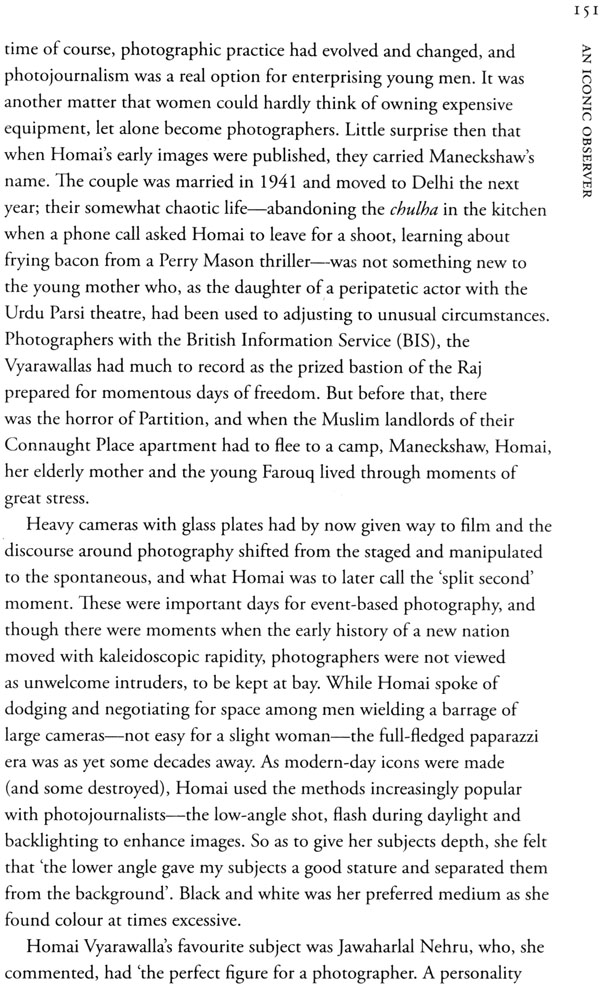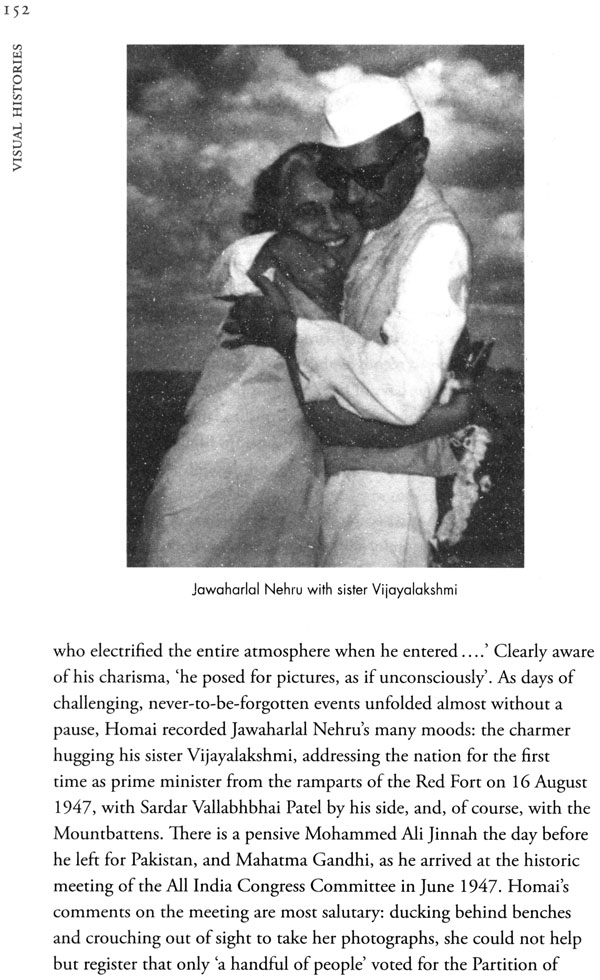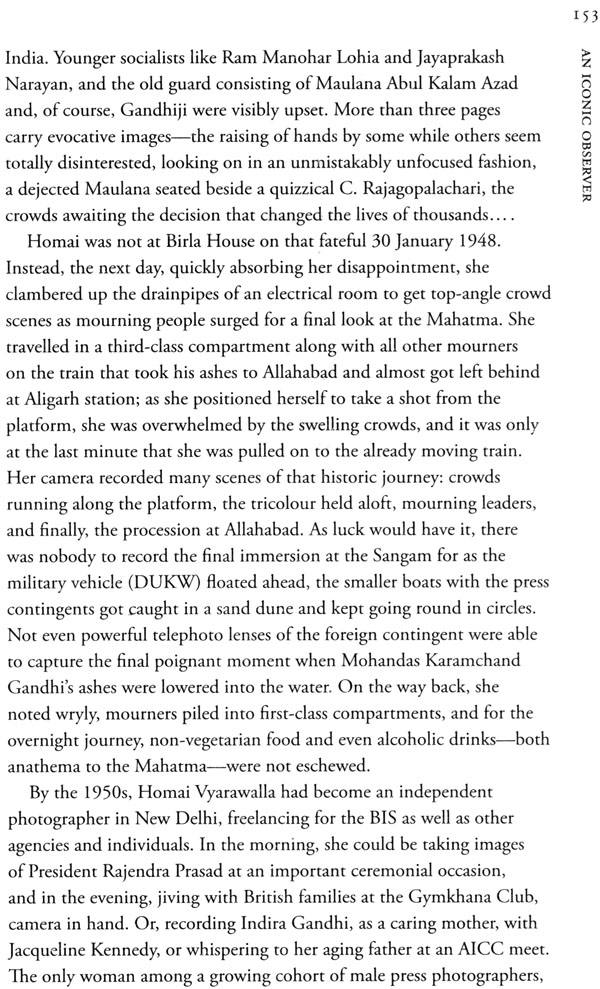
Visual Histories (Photography in the Popular Imagination)
Book Specification
| Item Code: | NAH217 |
| Author: | Malavika Karlekar |
| Publisher: | Oxford University Press, New Delhi |
| Language: | English |
| Edition: | 2013 |
| ISBN: | 9780198090267 |
| Pages: | 196 (Throughout B/W Illustrations) |
| Cover: | Hardcover |
| Other Details | 9.5 inch X 6 inch |
| Weight | 460 gm |
Book Description
Not much is known about how the coming of photography changed visual discourse or affected people’s lives. This volume documents such a history through photographs and the history of photographs in India.
Divided into two sections, the thirty-two essays look at the camera in the colonial era and in post-Independence India. The first section looks at photography through ‘The Colonial Eye’- with the camera and the studio becoming necessary prostheses in the new engagement between the colonized and the rulers in the nineteenth century. Europeans-of whom the British were the largest in number-were the initial users of the photographic studio and early studio images of the sahib-civil servant, lawyer, tea planter, missionary, and so on-are among the first available visuals. Soon, the memsahib appeared at the sahib’s side with or without self-conscious offspring. From around the end or lilt: 1850s, as The Indian urban middle class started patronizing photographic studios, these became instrumental in fracturing notions of space and visibility: where the use of public space was governed by the discriminatory practices of race and gender, the photographic studio became a shared locale. ‘Imaging India: the second section of the volume, looks at some such moments as well as takes the viewer to Independence and the ears beyond.
Malavika Karlekar has been a university teacher and has studied at the universities of Delhi and Oxford, UK. She is now Co-editor, Indian Journal of Gender Studies and has curated Re-presenting Indian Women 1875-1947: A Visual Documentary based on over three hundred archival photographs for the Centre for Women’s Development Studies. In the early years of the women’s movement, she wrote two books, Poverty and Women’s Work (Vikas Publishing House) based on a study of Balmiki women, and Voices from Within Early Personal Narratives of Bengali Women (OUP).
Over the past decade and more, Dr Karlekar has worked with archival photographs and her publications include Re-visioning the Past: Early photography in Bengal 1875-1915 (OUP 2005) and Visualizing Indian Women 1875-1947 (edited, OUP 2005) as well as In So Many Words: Women’s Life Experiences from Western and Eastern India (co-edited with Aparna Basu, 2008) and Remembered Childhood: Essays in Honour of Andre Beteille (co-edited with Rudrangshu Mukherjee, OUP 2010) and ‘The Tagores and Sartorial Styles’ in the Many Worlds of Sarala Devil 7he Tagores and Sartorial Styles (co-authored with Sukhendu Ray and Bharati Ray, 2010).
Malavika divides her time between Delhi and Ramgarh in Kumaon where she paints, gardens, and writes. She is married and has a son, daughter, grandson, and four dogs.
On a chilly October morning in Boston, two significant scientific discoveries, working in tandem, were presented to an admiring audience. This was in 1846, when at a public demonstration, sixty-eight-year-old John Collins Warren, among the most renowned American surgeons of the nineteenth century, administered the vapours of sulphuric ether to his patient, the fifty-two-year-old printer, Edward Gilbert Abbott. Abbott had a congenital tumour just below his left jaw that needed to be removed. Aware of the need to publicize the revolutionary use of anaesthesia where the patient appeared to be lost in sleep, and did not experience any pain, Warren called upon the photographers Albert Sands South worth and Josiah Johnson Hawes to record the momentous event. The owners of the highly successful studio that specialized in daguerreotypes (invented in 1839 by Louis-Jacques-Mande Daguerre in France), while quick to capitalize on the opportunity, had to deal with Hawes’ squeamishness at the sight of blood. A simulated re-enactment was photographed, although in months to come, Warren’s breakthrough in surgical procedures was recorded live by these two photographers.
A 2005 display from South worth and Hawes’ studio at New York’s upscale premises of the International Center for Photography (‘Young America’-The Daguerreotypes of South worth and Hawes) showcased shimmering images of Warren at work-this time operating on a young seamstress. Well over a century-and-a-half later, the operating theatre appeared cold, stark, and forbidding. But it was from this room that the ‘death of pain’ was announced, its discovery as well as visualization, a significant contribution to the epistemology around the management of suffering. It was clearly the historic moment that appealed to South worth and Hawes, who otherwise seldom found it necessary to step out of their well-appointed studio on Tremont Row, in the heart of Boston’s artistic world.
An exhibition gallery attached to the studio displayed portraits of important clients-Ralph Waldo Emerson, Harriet Beecher Stowe, and Henry Wadsworth Longfellow. Within the studio, equipped with elaborate props, costumes, and backdrops, the two men preferred to take the photographs themselves rather than depend on the growing breed of operators, as those who handled cameras were also called. As in other parts of the world, these would be framed or put into elegant albums with tooled leather or Morocco leather-bound covers with gilt edgings and an elaborate clasp, part of the personal gallery of families keen on remembering or asserting identity and belonging. Except for the rare on-site photographs, the production of daguerreotypes required a specialized space, trained personnel, and a whole host of props and accoutrements.
Shortly after the invention of the daguerreotype, the photographic studio came into being and, in no time, appealed to the world’s rapidly expanding gentry-the established upper and middle classes as well as those aspiring to improve their life chances. As studio photography quickly put the portrait painter out of business, client expectations also increased and diversified. By the middle of the nineteenth century, photographic protocols started evolving among which was an unerring sameness characterizing pose, posture, gaze, and also equipment, props, and even backdrops. The studio became an enclosed space where fantasy and desire could be worked out, amply aided by elaborate backdrops that were unfurled with a flourish. Irrespective of whether it was New York, Cairo, or Bombay, there was a certain unmistakable ubiquity in these new, almost sacred, spaces, a distinct etiquette marking their usage. Frequently located on the top floor of buildings, the ceilings of which were fitted with blue glass to let in light, the studio resembled an elaborate green room. A description of an early London studio comments on its ornamental plasterwork, velvet, and gilt, with changing rooms, maids in attendance, and cosmeticians at the ready. Here, as Walter Benjamin rather sardonically commented, the photographer was confronted with representing ‘a member of a rising class equipped with an aura that had seeped into the very folds of the man’s frock coat or floppy cravat’. According to art historian Partha Mitter, colonial rule coincided with ‘one of the greatest transformations’ in India’s visual culture that broke away from Mughal pictorial conventions: three facrors contributed to this creative process-’Victorian academic painting; the process of mechanical reproduction and finally the camera.’ The present volume focuses on the camera, its initial locale, the studio; its owners, photographers; and growing number of eager clients.
The new visual specialist, often the owner of the studio, was a slightly intriguing-if not awesome-icon of the industrial century. As director of the minor theatrical production, his staccato instructions were diligently followed by a primarily male clientele. The photographer and his team (here again, the majority were and continue to be men), took charge of the client/s, went through requirements carefully, and made suggestions on demeanour and even gave directions on items of clothing and accoutrements. Props, such as impressive tomes, elaborately carved furniture, pediments, exotic indoor plants, and so on were also available for selection, as also, in some cases, were items of clothing. To prepare his clients adequately, Lala (later Raja) Deen Dayal (1844-1905), the most prominent Indian photographer of the times, provided a catalogue of his work that also contained a step-by-step guide of what to expect on a visit to his studio. Clearly, the sitter was well advised to place himself/herself in the hands of the specialists. An engagement at his photographic studio could take several hours and be physically taxing. Often, a revolving studio chair incarcerated the sitter whose head was fixed with a clamp and limbs too were similarly immobilized.
Clients were asked not to be intimidated but rather participate in the process. Decision-making on the kind of backdrop required-whether it was to be one of Scottish glens, distant castles, a tropical rainforest, or even the Taj Mahal-required thought and introspection. The staging of contexts in the studio reminds one of the power of the early photograph to re-enact-as in the case of Warren’s surgical procedure-or indeed, enact, a fantasy. In the colonial context, the backdrop could either assertor subvert the sitter’s ‘real life’, often challenging the client as well as the photographic establishment to produce the desired effect. Settings with expensive draperies, overstuffed chairs, objet d’art and other Victoriana were vital in the spectacle of presenting oneself for an audience. These not only connoted a certain established status but also became symbols of aspiration for a life of achievement and learning, and of a certain kind of leisure and ease. Here again, often the element of fantasy was scarcely hidden.
In the nineteenth century, the mandate of Empire necessitated the introduction of several institutions, innovations, and styles of life into the colonies. The camera and the studio became necessary prostheses in This new engagement between peoples. They recorded, classified, and docketed a subject people; sometimes this recording was less than kind. At one level, images of the jewel in Victoria’s crown and of her many and varied subjects helped in an understanding of a wide and diverse canvas. The photograph assisted the imperial gaze, the eyes, if not ears, of an intricate system of surveillance and control. At the unofficial and more informal levels, the photographic gaze brought pleasure and excitement as it satisfied the proclivities to record, document, and immortalize; these emotions were often tinged with a belief in the military and political supremacy of the British Indian Empire.
Research into colonial photography is endlessly challenging. Photographs based on glass-plate negatives, sepia-tinted calotypes (the earliest prints on paper), salt-and-albumen prints, and the occasional silvered daguerreotypes available in various libraries, museums, and private holdings the world over are only a fraction of what were produced after 1839. Even fewer in number are commentaries on methods, experiments with new equipment, and the life and times, so to speak, of photographers. In India, while there is scattered information on important photo studios like Bourne & Shepherd, stories of individual genius are rarely available-and, in fact, for some inexplicable reason, anonymity, even in the domestic sphere, characterizes much of the corpus of colonial and early postcolonial photography.
Nor are there too many diligent excavators in the field. Dredging out material that a purist would hardly consider to be conventional sources as well as having one’s antenna tuned for the occasional textual comments-often made in passing-are essential for the photographic researcher. Nothing comes too easily-but when a nugget appears, the exhilaration is unmatched. Some of the articles in this volume are the result of such excavations-and of a story being woven around an image. Here one cannot but take note of visual theorist John Berger’s cautionary note that ‘beyond the moment recorded and the present moment of looking at the photograph, there is an abyss ... no invented story, no explanation offered will be quite as present as the banal appearances preserved in this photograph’. He believes that as ‘all photographs are ambiguous, when these are used with words they ‘produce together an effect of certainty, even dogmatic assertion’. The words, Berger feels, give meaning to a photograph. Yet their ambiguity could well suggest ‘another way of telling’. I was quite aware of this predicament while ‘reading’ images and though I have reconstructed a life around each photograph, it can have as many lives as there are viewers.
The volume is divided into two sections-The Colonial Eye and Imaging India-the first leading logically and chronologically to the second. Europeans in India-of whom the British were the largest in number-were the initial users of the photographic studio. Early studio images of the sahib-civil servant, lawyer, tea planter, missionary, and so on-are among the first available visuals; soon the memsahib appeared at his side with or without self-conscious offspring. Elaborate studio props were on display, fanciful backdrops unfurled, and the Raj family was all set to be recorded-significant images for posterity. As new lifestyles were evolving, the bungalow, its interiors, camp life, the waiting bullock cart, children on horses with syces in attendance were photographed. All such visuals, together with memoirs, lend themselves to much story-telling as did accounts of individual genius behind the black shroud. Some painted and photographed, like Charlotte Canning; others relied only on cumbersome machines carted over inhospitable terrains to photograph in detail the architectural monuments or engineering feats of the Empire.
| Acknowledgement | ix |
| Introduction | xi |
| The Colonial Eye | |
| Under Canvas and Within Compounds | 3 |
| ‘Fixing’ the Subject | 9 |
| A Raja’s Realm | 14 |
| A Performative Space | 19 |
| The Photograph and its Accoutrements | 24 |
| Glass-plate Negatives in Bullock Carts | 29 |
| Parda and a Poniard | 34 |
| Shooting the Sublime | 39 |
| The Empire and an Aficionado | 44 |
| Through a Prism, Darkly | 49 |
| Theatre of War | 53 |
| Sites of Past Conflict | 57 |
| A Sky of Inky Tint | 62 |
| A Racy Counter-narrative | 67 |
| Postcards from Home | 72 |
| Panoply of the Raj | 77 |
| Reading the Pose | 85 |
| Ephemeral Encounters | 91 |
| Cameras in the Classroom | 96 |
| A Grand Old Man | 101 |
| Tales of an Elephant and a Mule | 106 |
| Imaging the Other | 111 |
| A Child Widow’s Story | 116 |
| A Dancer in the Darkroom | 121 |
| Ways of Engaging | 126 |
| Sacred Spaces | 131 |
| Views behind the Veil | 136 |
| Memorializing the Mahatma | 141 |
| A Monsoon of Hatred and Despair | 145 |
| An Iconic Observer | 150 |
| Histories on the Wall | 155 |
| The ‘Second Creature’ | 159 |
| Glossary | 165 |
| Readings | 168 |
| Copyrights | 172 |
| About the Author | 175 |
